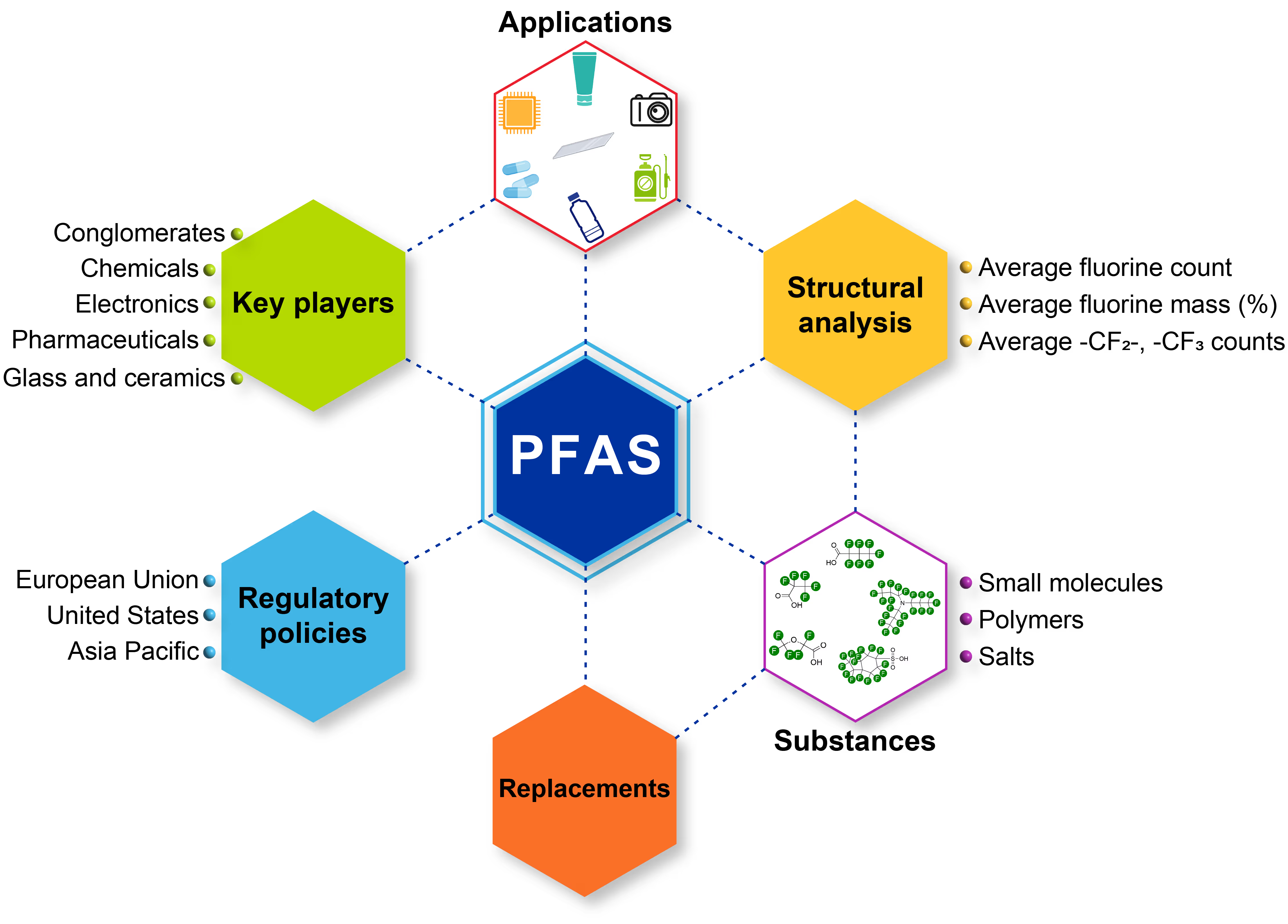PFAS regulation and research: Impact, landscape, and outlook
Use your 2025 budget before it's gone. Invest in strategic intelligence that will power your 2026 initiatives. Through December 31, get this report for just $1,200 per individual license—76% off the regular $5,000 price.
Report summary
Perfluoroalkyl and polyfluoroalkyl substances (PFAS) are used in thousands of products across many industries. With more than 24 million distinct chemical structures meeting the OECD’s PFAS definition, regulatory pressure is increasing. The EU, U.S., and several Asian countries have all begun employing methods to restrict or outlaw PFAS usage, causing companies and scientists to rethink their products, supply chains, and innovations.
Global PFAS Landscape – Roadmap for transforming regulatory challenges into innovation and market leadership examines today’s PFAS landscape. With our unmatched chemical structure authority and expert curation, we have analyzed more than one million scientific documents, revealing usage patterns and regional variations to help you navigate regulatory changes and discover sustainable alternatives.
%20(1).avif)
PFAS regulations are changing rapidly, and they will impact your business. In this report, we provide you with the necessary information to understand your risks and make decisions quickly.
Governments worldwide are taking action to limit PFAS use. However, the pace, scope, and definitions vary by region, creating uncertainty for companies that manufacture, supply, or include PFAS-containing products.

We analyzed more than 350,000 unique compounds that appeared in more than 1 million scientific documents, which exceeds the commonly cited estimate of 10,000-15,000 PFAS compounds. We focused only on substances with established scientific or commercial relevance.

This report will help you understand what guidelines are changing, where these changes are happening, and how to respond before deadlines or supply chain disruptions derail your business.
Table of contents
Methodology
Structural Search Parameters
To comprehensively analyze substances meeting the OECD's 2021 expanded definition of PFAS, we developed a precise structural search query. This query was designed to identify compounds containing the structural fragment R-CF2-R' (where R or R' ≠ H, Cl, Br, I), representing substances with at least one fully fluorinated methylene carbon atom.
Data Refinement Process
The initial structural search identified approximately 24 million distinct chemical structures within the CAS Content CollectionTM. To focus on compounds with established scientific or commercial relevance, we applied a reference threshold filter, limiting the dataset to substances documented in at least three separate scientific references—primarily journal articles and patents, but also including conference papers, clinical trials, preprints, and dissertations that have been expertly curated as part of the CAS Content Collection.
This refinement process yielded more than 350,000 unique CAS Registry Numbers® (CAS RNs) meeting both the structural criteria and the reference threshold requirement. These substances are collectively mentioned in over 1 million scientific documents.
Information Resources
The analysis draws upon the CAS Content Collection, which provides human-curated scientific information including:
- Chemical substance records with structural information.
- Bibliographic data from scientific literature.
- Patent documents from global patent authorities.
- Indexed scientific concepts and applications.
This curated approach ensures that the structural analysis accurately represents the chemical space encompassed by the OECD definition while focusing on compounds with documented scientific or commercial significance.
Published August 2025.
Sample report
Who will this report help?
This report is designed for teams and professionals who need to make informed, strategic decisions about PFAS in their products and supply chains.
- Chemical manufacturers and suppliers
- Industrial end-users
- Regulatory affairs professionals
- R&D teams
- Sustainability and ESG strategists
- Legal and risk management professionals
If your organization works with PFAS or depends on impacted products, this report gives you the clarity and foresight to evaluate alternatives, saving you time and reducing impending risks.
Why CAS?
CAS, a division of the American Chemical Society, is a world-leading scientific information solutions organization focused on transforming lives through the power of science. We curate, collect, and analyze published scientific literature to create solutions, including CAS SciFinder®.
By staying up to date with published literature, scientific advancements, and the happenings of each related industry, we bring together unique expert insights unavailable anywhere else.
Contact us
For questions related to Global PFAS Landscape – Roadmap for transforming regulatory challenges into innovation and market leadership, please reach out to the CAS Customer Center.

- Instant access via PDF
- Analysis of more than 350,000 unique PFAS compounds
- Breakdown of global PFAS regulations
